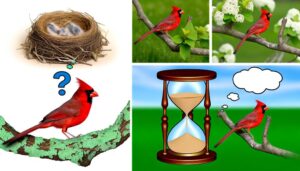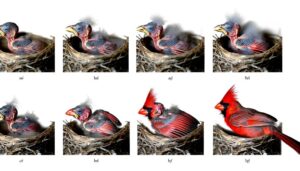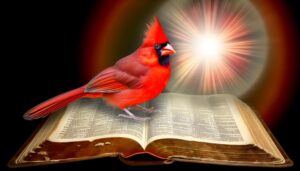7 Key Differences Between Cardinal Birds vs. Red Robins
The Cardinal Bird and the Red Robin, though both sporting vivid red, have unique traits. Cardinals stay put year-round, singing robust songs and feasting on grains and fruits.
Their bright hues signal fitness, while their crest communicates emotion. Robins migrate, their diet shifting with the seasons from insects to berries.
Your glimpse of their red breast might be amidst a city park or woodland – they're quite versatile. When it comes to habits, Cardinals and Red Robins further diverge.
Stay tuned to learn how these bird's different ways of living highlight the rich tapestry of avian life.
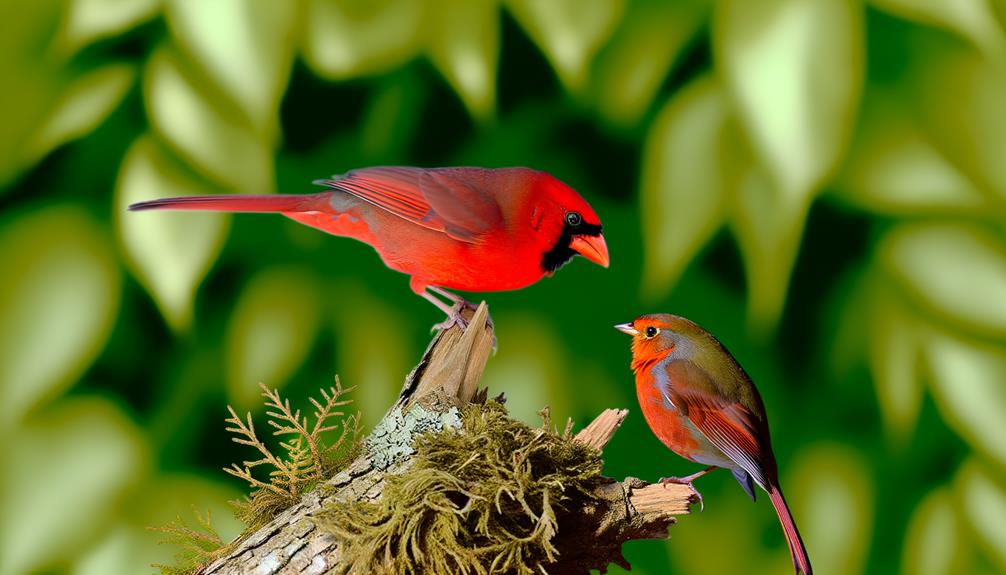
Key Takeaways
- Cardinals and Red Robins differ in habitat preference, with Cardinals favoring woodland edges and Robins adaptable to a wide range of habitats.
- Cardinals are known for their striking red plumage and monogamous behavior, while Robins have a fiery-red breast and display solitary, territorial behavior.
- In terms of diet, Cardinals are granivorous, mainly eating seeds, grains, and berries, whereas Robins are omnivorous, consuming invertebrates, fruits, and berries.
- Cardinals have a longer lifespan averaging 15 years and mate for life, while Robins are less monogamous and have 2-3 broods per year.
- While Cardinals are non-migratory, Red Robins are migratory birds with a vast geographical range.
Overview of the Cardinal Bird

Diving into the world of ornithology, let's first take a detailed look at the cardinal bird, a species celebrated for its vibrant red plumage and distinctive crest.
You'll find cardinals, also known as redbirds or northern cardinals, across North America, from southern Canada to Mexico. They're non-migratory, cherishing freedom in their wide territorial ranges. You'll be fascinated by their robust, clear-toned songs, a melodic treat to any ear.
Male cardinals, with their fiery red hues, are easy to spot, while females sport more subdued tones, a mix of gray and reddish hues. Their diet's diverse, consisting mainly of seeds, grains, fruits, and insects. Cardinals are monogamous, exhibiting loyalty to their partners. Understanding these creatures provides a wonderful glimpse into avian biodiversity.
Now, we're ready to explore the red robin.
Understanding the Red Robin
Now, let's turn your attention to the red robin, a bird recognized for its bright red breast and cheerful song. This bird, scientifically known as Turdus migratorius, belongs to the thrush family and is native to North America. It's identified not just by its red plumage but also by its rounded body, long legs, and dark gray to brown back and wings.
The red robin's song, a series of melodious whistles, is a familiar sound, often signaling the arrival of spring. It's a migratory bird, known for its vast range, inviting a sense of freedom.
It's also an earthworm hunter, with a diet that changes with seasons. In spring and summer, it's largely insectivorous, shifting to a diet of berries and fruits in autumn and winter.
Cardinal Bird's Iconic Features
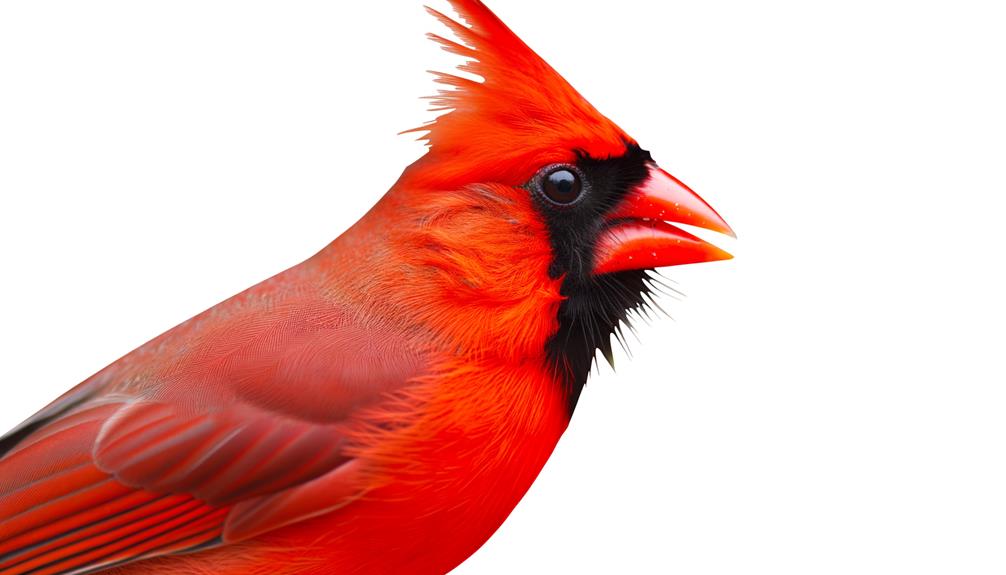
Shifting focus to the cardinal bird, you can't help but notice the striking red plumage, a feature that firmly establishes its reputation as one of the most recognizable and admired species in the bird kingdom. This vibrant hue isn't just for show; it's a result of a diet rich in carotenoids.
Male cardinals, in particular, flaunt brighter reds to signal their fitness to potential mates.
Beyond its fiery feathers, the cardinal's distinctive crest, a pointed headgear, sets it apart. This feature, often raised in excitement or flattened in aggression, communicates their emotional state.
Their melodic song, a series of clear whistles, is another characteristic trait.
Red Robin's Distinctive Traits
Now, let's turn your attention to the distinctive traits of the Red Robin.
You'll find that their unique features and behaviors set them apart in the avian world.
Observe closely, and you'll notice the intricacies of their vibrant plumage, the nuances of their song, and the intricacies of their social interactions.
Red Robin's Unique Features
Immerse yourself in the enchanting world of the Red Robin, a bird distinguished by its strikingly vibrant plumage and cheery song. This avian wonder carries a set of unique features that set it apart from its feathery peers.
- The Red Robin's coloration is its most noticeable feature. The bird is marked by a fiery-red breast and face, contrasted by brownish-black wings and tail.
- The bird's size is also distinctive; it's smaller than many common birds, making it nimble and agile.
- Another defining trait is its round body shape, which gives it a charming, endearing appearance.
- Finally, the Red Robin's song is a unique, melodious call that's both uplifting and enchanting.
These features combine to create a bird that's as captivating as it's free-spirited.
Behavior of Red Robins
Delving into the behavior of Red Robins, you'll soon discover that these birds exhibit a set of distinctive traits that make them captivating subjects of study. Unlike many avian species, Red Robins are solitary and territorial, fiercely defending their space from intruders.
You'll notice their complex song, a combination of rich warbles and high-pitched calls, used to communicate and claim territory. They're also known for their robust appetite and varied diet, which includes insects, berries, and small fruits.
Interestingly, you'll find that Red Robins engage in a behavior called 'anting,' where they rub ants on their feathers, presumably to remove parasites or apply formic acid as a form of self-grooming. This unique behavior underscores the Red Robin's resourcefulness and adaptability in the wild.
Habitat Comparison: Cardinal Vs Robin
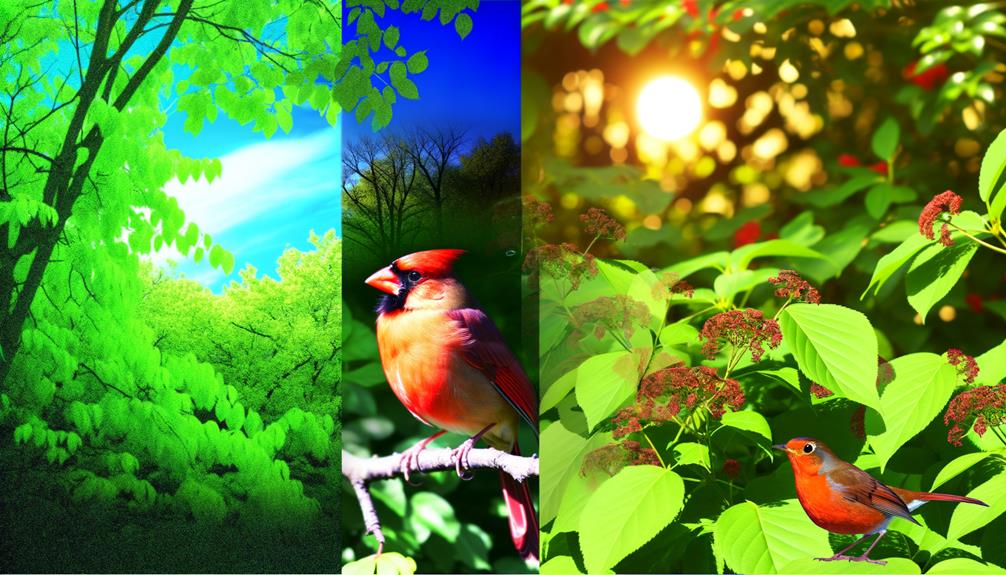
While both the cardinal and the red robin are known for their vibrant plumage, their preferred habitats highlight some fascinating distinctions between these two species.
The cardinal tends to favor areas with dense shrubbery, often found in woodland edges, thickets, or suburban gardens. You'll rarely spot one in deep forests or grasslands.
On the other hand, red robins are more adaptable, and thrive in a range of habitats, from city parks to coniferous woodlands.
- Cardinal's habitat: Woodland edges, suburban gardens, thickets
- Cardinal's avoidance: Deep forests, grasslands
- Red Robin's habitat: City parks, coniferous woodlands, gardens
- Red Robin's adaptability: Wide range of habitats
These habitat choices not only reflect their survival strategies but also influence their interactions and behaviors, which we'll discuss later on.
Feeding Habits: Who Eats What?
Examining the dietary preferences of the cardinal and red robin reveals a fascinating glimpse into their respective habits and ecological roles. Cardinals, you'll find, are mainly granivorous, feasting on a variety of seeds, grains, and berries. Their strong, conical beaks are perfectly adapted for cracking open seeds.
On the other hand, red robins are omnivorous. They'll eat a wide range of food items, but their diet primarily consists of invertebrates, fruits, and berries. You'll often spot them foraging on the ground for earthworms and insects.
Breeding and Life Cycle Differences
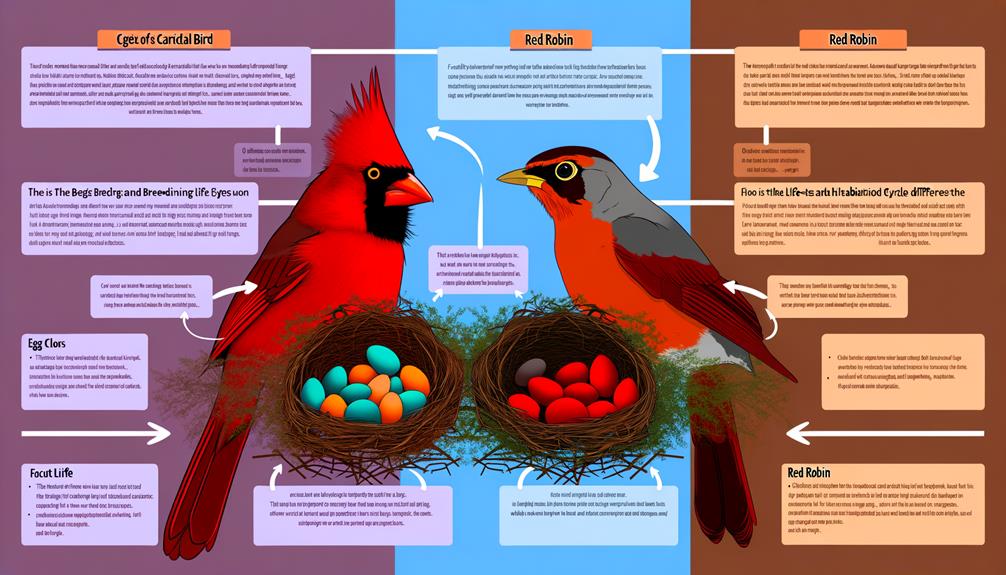
Let's explore the enchanting cycles of life and love as we compare the breeding habits and life cycle differences between the cardinal and red robin.
- Cardinals mate for life, a romantic notion that symbolizes fidelity and commitment. They share parental duties; both the male and female feed and care for the young.
- Red robins, on the other hand, aren't as monogamous. The females incubate the eggs while the males protect the nest.
- Cardinal's lifespan is notably longer, an average of 15 years, compared to the red robin's 2 years.
- Robins have two to three broods per year, while cardinals typically only have one.
These differences paint a vivid picture of nature's diversity, your understanding of which grants you a unique freedom to appreciate the world in new ways.
Conclusion
So, you've journeyed through the vivid world of the Cardinal bird and Red Robin, haven't you?
Although once cohabiting the same dinosaur-ridden world, they've evolved distinctly.
The flashy Cardinal with its majestic crest, the unassuming Red Robin with its vibrant belly.
Their habitats, diets, and breeding habits as different as chalk and cheese.
But aren't these differences what make our feathered friends so fascinating?
Remember, in the grand avian tapestry, every bird adds its unique hue.

